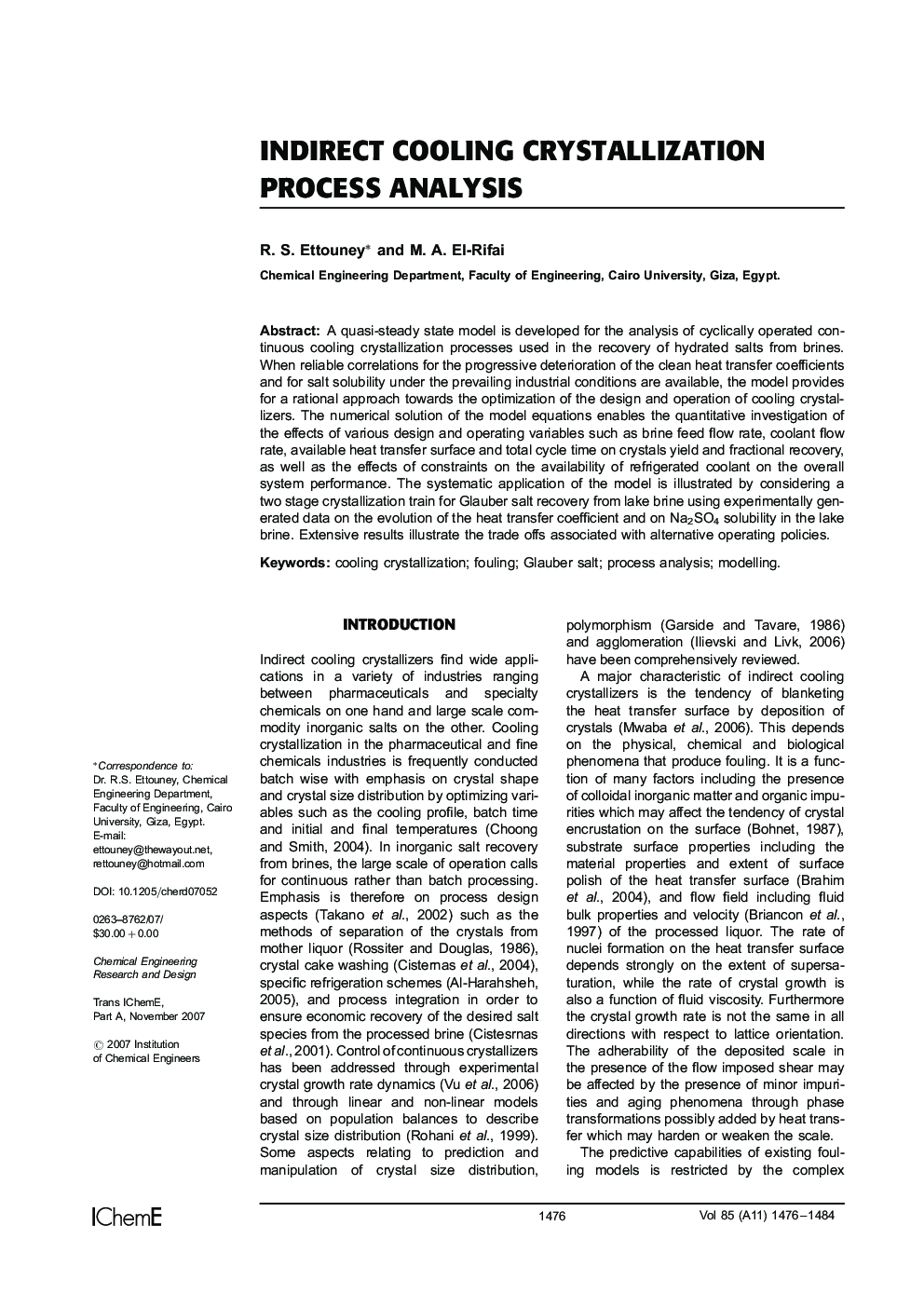| Article ID | Journal | Published Year | Pages | File Type |
|---|---|---|---|---|
| 622548 | Chemical Engineering Research and Design | 2007 | 9 Pages |
A quasi-steady state model is developed for the analysis of cyclically operated continuous cooling crystallization processes used in the recovery of hydrated salts from brines. When reliable correlations for the progressive deterioration of the clean heat transfer coefficients and for salt solubility under the prevailing industrial conditions are available, the model provides for a rational approach towards the optimization of the design and operation of cooling crystallizers. The numerical solution of the model equations enables the quantitative investigation of the effects of various design and operating variables such as brine feed flow rate, coolant flow rate, available heat transfer surface and total cycle time on crystals yield and fractional recovery, as well as the effects of constraints on the availability of refrigerated coolant on the overall system performance. The systematic application of the model is illustrated by considering a two stage crystallization train for Glauber salt recovery from lake brine using experimentally generated data on the evolution of the heat transfer coefficient and on Na2SO4 solubility in the lake brine. Extensive results illustrate the trade offs associated with alternative operating policies.
